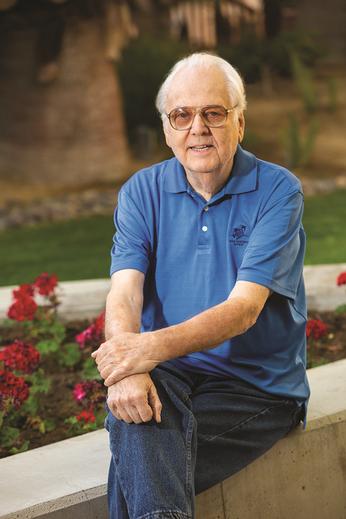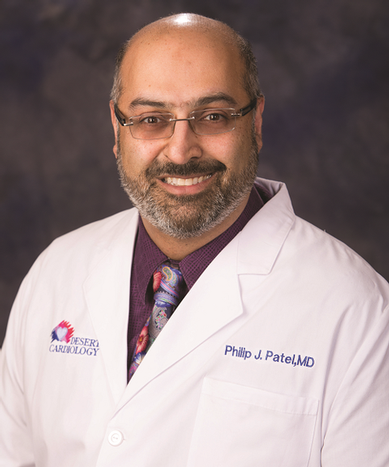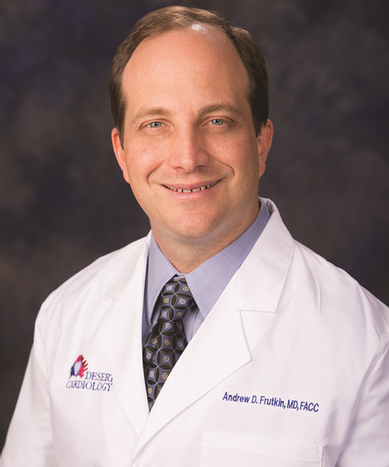



For several years, he has been under the care of Philip J. Patel, MD, FACC, FASE, FASNC, Board Certified in Internal Medicine and Cardiovascular Disease.
“Dr. Patel has been monitoring my tendency to have a lower-than- normal ejection fraction,” Konstant says, referring to a measurement of how well the heart pumps blood with each heartbeat. “He determined that I had a leaky mitral valve in my left heart chamber.”
“Mr. Konstant, in fact, had severe mitral valve regurgitation (MVR),” notes Dr. Patel. This is a condition in which there’s a backflow of blood caused by the mitral valve’s failure to close tightly. Konstant had a form of MVR called degenerative or primary MVR, caused by a structural abnormality of the mitral valve that leads to malalignent, or lack of coaptation [the joining together of two separated tissues], of the two leaflets of the mitral valve.
By spring 2018, Konstant was experiencing increasing shortness of breath on exertion, and periodic bouts of overwhelming fatigue and feeling “flat” mentally — which compromised his ability to work as a business trainer —which he says is, “something I really enjoy.”
While cardiologists and cardiac surgeons usually recommend surgery to repair or replace the mitral valve in cases like Konstant’s, he was considered too high-risk for such an invasive procedure, particularly since he’d already had two open-heart procedures. He also had other substantial medical problems.

Fortunately, just when Konstant needed an alternative treatment option, Eisenhower became the only hospital in the Coachella Valley to offer the MitraClip® procedure. In this minimally invasive procedure, the interventional cardiologists access the patient’s femoral vein in the groin to deliver a catheter to the right heart and then across the wall between the right and left atria (upper chambers of the heart) with the catheter to gain access to the mitral valve in the left heart. Using transesophageal echocardiogram guidance, the physicians then deliver a clip (or multiple clips) to reshape the mitral valve, bringing the two leaflets of the mitral valve into better alignment, thereby reducing the amount of regurgitation across the valve leaflets.
“The MitraClip was an ideal option for Mr. Konstant, and he was a good candidate for this procedure,” says Dr. Patel. Konstant underwent evaluation by Board Certified Cardiac Surgeon Joseph Wilson, MD, and by Board Certified Interventional Cardiologist Andrew Frutkin, MD, FACC, FSCAI, who, along with colleague Khoi Le, MD, FACC, FSCAI, Board Certified Interventional Cardiologist, perform the MitraClip procedure.
“This multidisciplinary approach to patient selection really benefits the patient,” says Dr. Frutkin. “We’re able to bring different perspectives and expertise to the table to arrive at the best solution for the individual.”
The multidisciplinary approach also extends to how the MitraClip procedure is performed. The patient receives general anesthesia, administered by one of Eisenhower’s Board Certified anesthesiologists who are experts in cardiac cases, including George Bancroft, MD, Dan Nelson, MD, Reed Saunders, MD and Bobby Yoon, MD, to allow the patient to undergo the procedure comfortably. Shortly after completion of the procedure, the patient returns to a fully awake state.
“It’s a tandem procedure with the echocardiologist and interventional cardiologist on either side of the patient in the catheterization lab,” notes Dr. Frutkin. “We use both X-ray fluoroscopy and transesophageal ultrasound echocardiography (TEE) to guide the catheter to the valve. TEE uses ultrasound to make detailed pictures of the heart. The physician guides a flexible tube (probe) with a transducer at its tip down the throat into the esophagus. Because the esophagus is directly behind the heart, TEE provides very clear images of the heart’s structure and valves.

“I’m the navigator and the interventional cardiologist is the pilot,” Dr. Patel adds. “We work together as a team.”
On May 31, 2018, Konstant became the third patient to undergo the MitraClip procedure at Eisenhower.
“His mitral valve anatomy was a bit more complex, so we treated it with not one but two clips placed adjacent to each other,” Dr. Frutkin says. “It reduced the severity of his mitral valve regurgitation from a grade 3+ (out of 4) to just a trace less than grade 1+.
“MitraClip is a repair — it doesn’t reduce regurgitation to zero, but it lessens symptoms and improves quality of life,” he notes. “And it happens quickly, usually within a day of treatment.” “I was able to go home 22 hours after my procedure and I felt fine,” Konstant relates. “It really was easy, physically, and my symptoms have dramatically improved.
“I would do this over surgery any day!” he adds.
Today, Eisenhower’s MitraClip team is performing two to four procedures per month.
“Our Eisenhower surgeons do an excellent job performing surgical mitral valve repair or replacement. But, the MitraClip technology opens up treatment to a much larger population of patients than we could otherwise reach with just surgery,” Dr. Frutkin says, noting that in people over age 75, the prevalence of significant MVR may be as high as 10 percent. “The MitraClip fills a large missing treatment niche, and we’re pleased to offer it as part of our comprehensive structural heart program.”
To contact Eisenhower Desert Cardiology Center, call 760.346.0642.